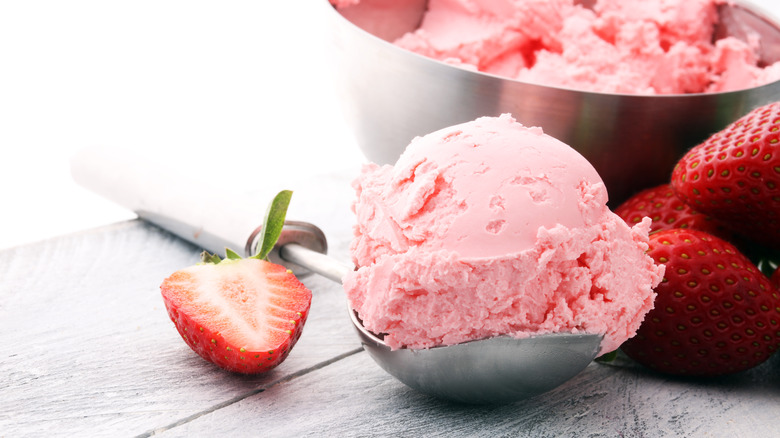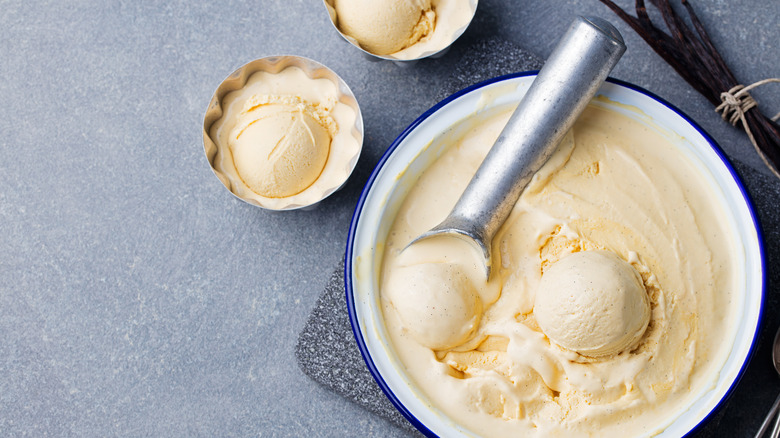Why Homemade Ice Cream Doesn't Soften As Fast As Store-Bought
It's completely understandable to want to dig in to a bowl of peppermint ice cream as soon as it is served. But some ice creams, particularly ones made at home, may require a bit of warming up before you can easily spoon bites of sweetness into your mouth. This is a common problem, assures David Lebovitz, and while you can preemptively set the carton of ice cream on the counter 10 to 15 minutes before you're planning on enjoying one or more bowls of ice cream, you have a few other alternatives to help you serve softer ice creams made at home.
The ice creams made at home will have less air than any of the brands you can buy, explains Dream Scoops, and air helps keep ice cream soft. David Lebovitz points to the machine that you're using to make your ice cream. It most likely churns at a lower speed than the kinds of machines that are used in commercial environments, so your ice cream won't end up as fluffy as the pints you can take away from the market. Churn your ice cream as long as possible, David Lebovitz advises, to try to capture as much air as possible into the mixture.
But there's another factor that might be keeping your ice cream hard.
Softer ice creams served at home
MasterClass explains that ice creams made at home typically don't include the kind of stabilizers store-bought brands have added to the frozen treat. Though professional pastry chefs have access to these food stabilizers, the amateur cook has several other options to serve an ice cream texture that doesn't require much thawing before it is served, assures David Lebovitz.
Ice cream mixtures with less fat and sugar can result in harder ice creams (fat doesn't freeze and sugar will lower the freezing temperature of water). To remedy recipes without kicking up the sugar content, use alcohol, advises David Lebovitz. Since alcohol doesn't freeze, adding a few tablespoons to your ice cream mixture before you begin to churn the recipe can help keep the finished product soft. Alternatively, David Lebovitz suggests adding gelatin, including whole milk or half-in-half in ice cream recipes, or adding more egg yolks if you are making frozen custards.
If you're trying to avoid dairy and animal products yet still crave a cold treat, we have a decadent vegan chocolate ice cream recipe to try.

